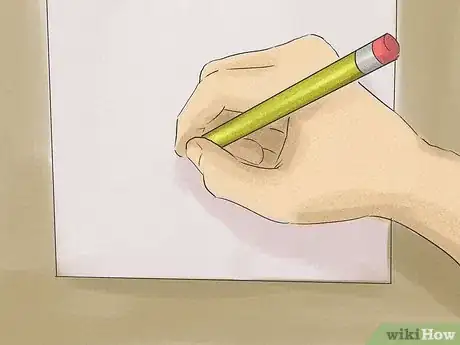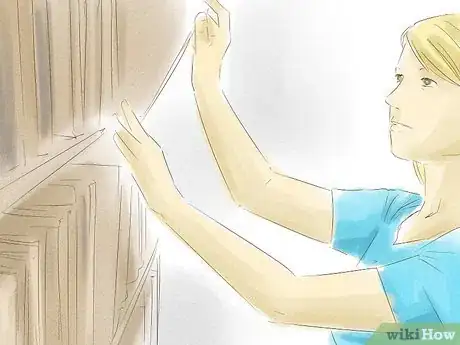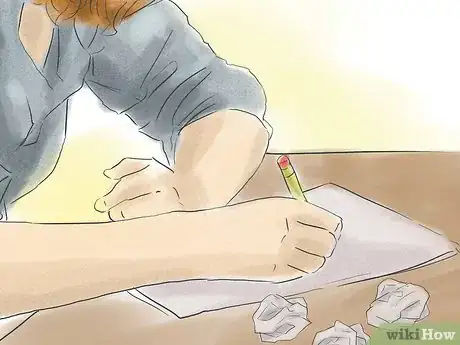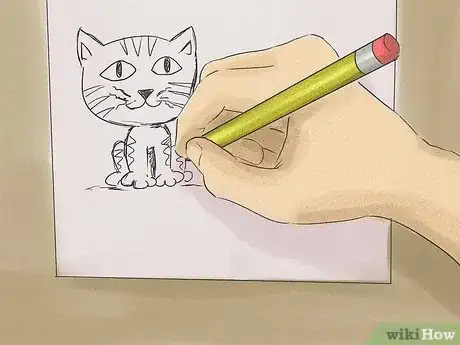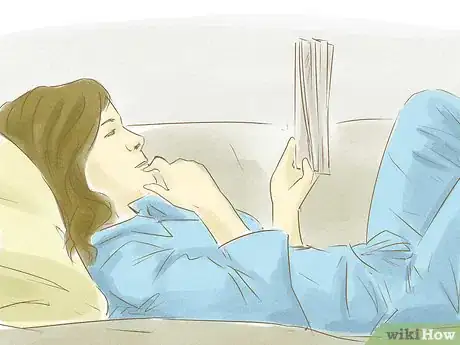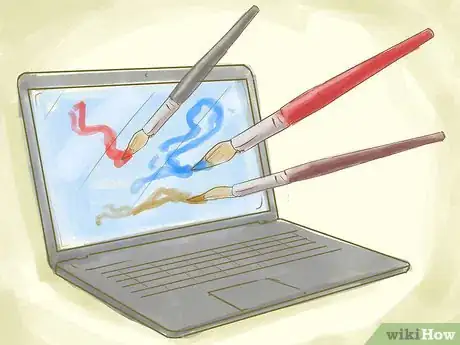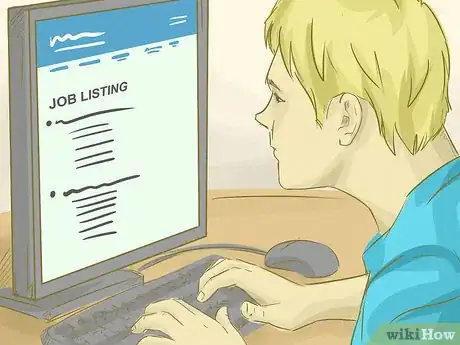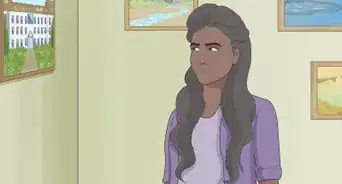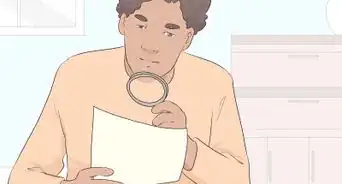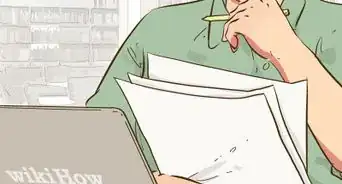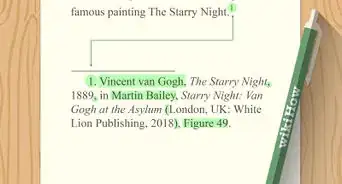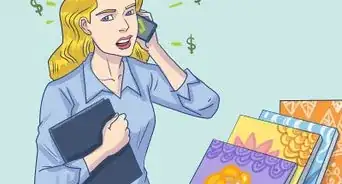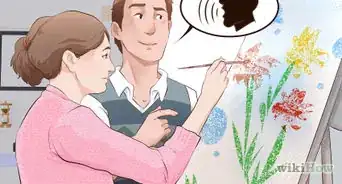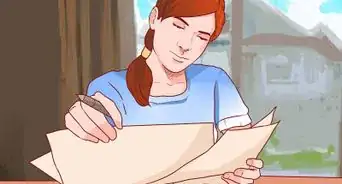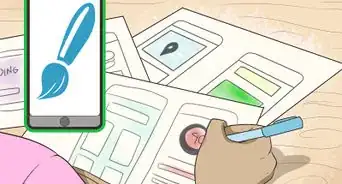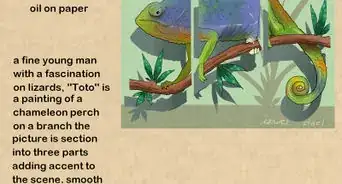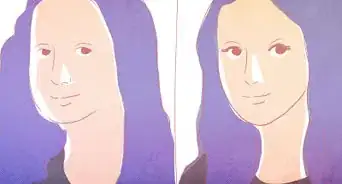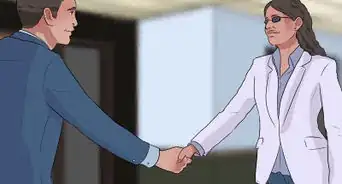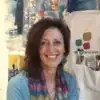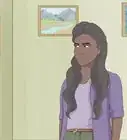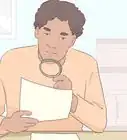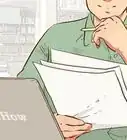This article was co-authored by Kathy Leader. Kathy Leader is an Artist and the Owner of The Art Process. With more than 36 years of art education experience, she specializes in providing mixed media art workshops for individuals and groups. In addition, she works with businesses and organizations to build morale, encourage creative problem solving, and find de-stressing tools. Kathy holds a BFA in Art Education from The University of Cape Town.
There are 9 references cited in this article, which can be found at the bottom of the page.
This article has been viewed 244,930 times.
Being an artist includes continuously evolving your skills, improving your technique and pushing yourself beyond the next boundary. It's part of your growth as an artist and can even see you changing your artistic techniques completely several times during a lifetime. Becoming a better artist is a journey and will bring greater satisfaction to you as you continue to build on what you already know.
Steps
Stocking Up
-
1Buy all of the necessary supplies. Drawing pencils, erasers, sketchbook, pastels, paint, an easel... whatever you think you will need for your area of expertise. New supplies and mediums can be encouraging. Try beginner sets of artist grade supplies, because they are often easier to use than the cheaper, student grade supplies.[1]
- Begin with an inexpensive sketchbook with lots of pages, and a sketching set that includes kneaded putty eraser and different grades of graphite pencils. It may also include charcoal pencils, charcoal sticks, graphite sticks and brown, gray, or reddish sketching sticks. All these tools are useful, and the supplies are cheaper in bundled sets than bought individually.
- "H" and 2H, 4H, etc are "hard" pencils that sharpen to a fine point, and give a very light mark, easily covered by paint or inking. They're for design. "F" is a "fine" pencil, a little harder than an HB, which is a normal No. 2 pencil, and middle hardness. "B" means black, and each successive degree of B pencil is softer, blacker, and smudgier. 2B is a good sketch pencil, 4B is a great one that gives good shading, and 6B or higher is almost like using charcoal, for ease of smudging and shading.[2]
-
2Purchase some how-to drawing books. This includes books on specific subjects, like how to draw animals, how to draw horses, how to draw seascapes, anatomy books, etc. Whatever you like most or get interested in. Try to accomplish at least one drawing a day. You can even frame them and put them up on your walls, to inspire you to keep going through the next day. You can also check out drawing books from your local library, and find out which one inspires you the most before buying it. Work through each of the exercises in turn, rather than trying to do everything in the book at once.
Progressing with Your Art Skills
-
1Date your daily sketches. They don't need to be complex or difficult - a five minute "gesture sketch" is as useful for learning to draw as a half hour spent doing a detailed drawing. If you have a half hour, spending it on half a dozen shorter sketches will actually give better practice. Try to get it right, but don't worry about perfection. You'll achieve good, recognizable drawings by constant practice more than anything else.[3]
-
2Choose a favorite subject. This might be your favorite animal, a favorite flower, a rock, a bottle with light coming through it, anything you would really like to draw well and care about personally. Draw the same thing over and over many times, in many different ways. Repeated drawing of the same subject or type of subject (Each of your cats, your cat from several different photos, your cat's paw one day, your cat's nose the next) will give you a much richer grasp of the anatomy and proportions of that subject. When you've drawn your pet cat enough times, it becomes easy to sketch a tiger on the first try. Draw enough pebbles, and a mountain becomes easy and understandable.
-
3Sketch and draw anything you see! It could be the homeless dude begging for change, or the little girl skipping around with a balloon in her hand. Whatever you see that looks interesting, draw or sketch it![4]
- Still, life is one of the easiest subjects for beginners to draw. Literally, the objects don't move. Choose simple ones at first, a vase without too many curlicues, a few pebbles, a flower without too many petals, a clear bottle with an interesting shape, etc. Draw each of the objects separately as a study, then start arranging them together in different ways to see how they go together. The big advantage to still life is that your models don't move, and if you do it indoors, the light from your lamps doesn't change with the time of day, either.
- Animal drawing may be your passion. Start with your pets. Start when they're sleeping, even if that doesn't seem like an exciting pose - it's when the animal's more likely to hold still long enough to be drawn. Use photos of your pets. Visit zoos with a camera, and snap photos of every animal you see and like, then work from your own photos.
- Look for open source photos like Wikipedia Commons and other photos where the photographer gives permission to draw from them. You can also contact photographers who take good animal photos and post them on Flickr or Facebook, asking permission to draw from their photos. Many will be happy to give permission, and most will want to see your drawings. When you're used to drawing animals fast from life, try drawing at the zoo, or wildlife like the birds at your feeder. Life drawing of animals is a good way to learn to do quick gestures and detail them later!
- Buildings and architecture. Study perspective, as it's important in buildings more than anything else to make them look real. Find a good book on perspective, and do all the exercises. Be careful about working from photos, because they will sometimes distort vertical lines and alter perspective. You may have to correct the photo once you understand what you're doing. This is another popular fine art subject that never loses its appeal. Like still life, you can go out and draw buildings in person, without your model getting up to walk away.[5]
- Landscapes are a traditional fine art subject. Sketch your own yard from life often, sometimes a small beautiful area, sometimes trying for the big panoramic view. Go out on camping trips, or visit local parks with your sketchbook in hand. Do several quick, five minute or less gesture sketches, to get the main elements of your landscape design down, just rough outlines, then pick the best small thumbnail and draw that view larger. This saves a host of troubles over starting with the details of a leaf, and only finishing one branch of that tree in an hour. Details are actually easier than doing the big shapes of things. Landscape drawing is about textures, shapes, and light that changes quickly, so learn to draw fast! Get the shapes of shadows down first thing, because the angle of the light will change in half an hour, and so will the shape of the shadows.
- People are a popular subject for drawing. Start with the friends and family members you can convince to sit still for a half hour or more to let you draw them. Paint the ones you love. Sketch anyone who interests you. Again, practice quick small "gesture" drawings in public, so that you can get the gist of a figure or a face within a few minutes before the person wanders off or does something else. Sketching in public is also a great ice-breaker, a good way to meet people, because someone often wanders up to see what you're drawing. You have a topic to talk about right away - art - one that most people like and one that isn't controversial.
- Get down low in your garden or local park for some deep inspiration among the flowers and beetles. Imagine yourself as one of the little critters hopping or flying about. How does the world look for this creature? Take photos of the leaves, petals, special textures to use later as reference guides for your artwork.
Getting Lessons and Expert Advice
-
1Look into art lessons of some sort. Most places offer community classes, where you can sign up to take some art lessons. Just know that you will have to invest a bit of money, but it certainly will help.
- Look for art lessons online, and art videos or DVDs. Many professional artists create instructional DVDs in various mediums, or on drawing in general. Websites with forums like http://www.wetcanvas.com will often have free art lessons, with volunteer teachers who give assignments, critique your work, and help in encouraging ways. Sites like http://how-to-draw-and-paint.com may have a lot of free instruction available, and downloadable e-books, as well as further instruction for sale. "Try before you buy" with online art lessons, some are as good or better than in-person art instruction. You should like the teacher's art, and also enjoy the teacher's style of presentation, to get the most out of an online class.[6]
- YouTube will have plenty of choices by different artists for you to learn from too. Practice a lot after learning from these videos.
-
2Subscribe to art instruction magazines. The Artist's Magazine, Pastel Journal, Watercolor Artist, American Artist and others all have excellent articles on how to draw and paint. The more you read, the more you'll understand the many technical terms and different techniques there are to drawing and painting. Learning art is cumulative. It may seem easy, because people who do something well for a long time do it easily, but it's a complex field of study that takes time and effort to master. Patience, practice and study are what really constitutes "talent" - talent is loving the process so much, that you're willing to put up with your mistakes in order to learn how to do it so well, others call you talented. This usually comes at the point they can recognize what you drew for what it is.
-
3Learn composition and design. Look for books on design and composition, take classes in design, study it as much as you do how to draw things accurately. It makes the difference between whether you create great art or just copies of photos. Learn how to crop reference photos, choose which subjects to shoot or sketch in a landscape, guide a viewer's attention in the painting to the most important thing in it - a portrait's eyes, the sunlit patch in a landscape that you chose as a focal point, the animal bending to drink, the people on the beach. Some subjects are attention-getters by themselves, like a cute kitten, but you can improve on that cute kitten picture to the point it's irresistible, if you learn good design principles and give just the right balance of background space around it.[7]
Expert Q&A
-
QuestionHow do I become a good sketch artist?
 Claire WentzelClaire Wentzel is an award-winning Artist and Strategic Creative Consultant. Her business, Red Rose Studios, is based in Las Vegas, Nevada, where she also serves on the Clark County Public Art Committee. With over 20 years of experience, she specializes in mixed media participatory art, brand messaging, and building organizational culture. She earned her BA in Fine Art with Distinction from the University of Colorado-Boulder and completed a painting residency at the International School of Painting, Drawing, and Sculpture. Her chalk mural work has been featured in EdHat and I Madonnari Italian Street Painting Festival advertising.
Claire WentzelClaire Wentzel is an award-winning Artist and Strategic Creative Consultant. Her business, Red Rose Studios, is based in Las Vegas, Nevada, where she also serves on the Clark County Public Art Committee. With over 20 years of experience, she specializes in mixed media participatory art, brand messaging, and building organizational culture. She earned her BA in Fine Art with Distinction from the University of Colorado-Boulder and completed a painting residency at the International School of Painting, Drawing, and Sculpture. Her chalk mural work has been featured in EdHat and I Madonnari Italian Street Painting Festival advertising.
Award-Winning Artist and Strategic Creative Consultant Just look at people! My favorite technique for drawing anything, but especially portraits and sketches, is called blind contour drawing. That's an exercise where you look at your subject, and you cannot look at your paper or lift up your pencil while you draw. Then, you'll notice that what you've actually drawn is how it looks rather than how you think it's supposed to look. So, to me, that's a really fundamental skill
Just look at people! My favorite technique for drawing anything, but especially portraits and sketches, is called blind contour drawing. That's an exercise where you look at your subject, and you cannot look at your paper or lift up your pencil while you draw. Then, you'll notice that what you've actually drawn is how it looks rather than how you think it's supposed to look. So, to me, that's a really fundamental skill -
QuestionHow can I improve my digital art skills?
 Claire WentzelClaire Wentzel is an award-winning Artist and Strategic Creative Consultant. Her business, Red Rose Studios, is based in Las Vegas, Nevada, where she also serves on the Clark County Public Art Committee. With over 20 years of experience, she specializes in mixed media participatory art, brand messaging, and building organizational culture. She earned her BA in Fine Art with Distinction from the University of Colorado-Boulder and completed a painting residency at the International School of Painting, Drawing, and Sculpture. Her chalk mural work has been featured in EdHat and I Madonnari Italian Street Painting Festival advertising.
Claire WentzelClaire Wentzel is an award-winning Artist and Strategic Creative Consultant. Her business, Red Rose Studios, is based in Las Vegas, Nevada, where she also serves on the Clark County Public Art Committee. With over 20 years of experience, she specializes in mixed media participatory art, brand messaging, and building organizational culture. She earned her BA in Fine Art with Distinction from the University of Colorado-Boulder and completed a painting residency at the International School of Painting, Drawing, and Sculpture. Her chalk mural work has been featured in EdHat and I Madonnari Italian Street Painting Festival advertising.
Award-Winning Artist and Strategic Creative Consultant Stop sitting around complaining about how you're not a good digital artist. I mean, to me, truly it's a struggle. I haven't figured out how I can translate my physical manual drawing skills into a digital environment. Just find simple tools and play with them. Technology has really improved in the last ten years and it's much more accessible, so, find other digital artists and see what they're doing.
Stop sitting around complaining about how you're not a good digital artist. I mean, to me, truly it's a struggle. I haven't figured out how I can translate my physical manual drawing skills into a digital environment. Just find simple tools and play with them. Technology has really improved in the last ten years and it's much more accessible, so, find other digital artists and see what they're doing. -
QuestionHow do I become better if I have issues listening to people who are trying to teach me?
 Community AnswerUse this as an opportunity to improve your listening skills. Even more important than being a good artist, being able to listen and follow directions from others are skills you will absolutely need for your whole life. Just be patient and focus your attention. Ask questions when you need clarification.
Community AnswerUse this as an opportunity to improve your listening skills. Even more important than being a good artist, being able to listen and follow directions from others are skills you will absolutely need for your whole life. Just be patient and focus your attention. Ask questions when you need clarification.
Warnings
- Do not draw from photographs you didn't take without permission from the photographer. Look for photos the photographer has already given permission by using a Creative Commons license, or ask the photographer directly whether you can use it. Respect the terms of the license, always attribute your source image if they ask (and it's courteous if they didn't), and if they tell you not to sell the drawing, then don't. You're better off using your own photos, and learning to take good reference photos. That's a different type of photography, than taking pictures to be good pictures in their own right. It's an advanced skill to be able to change and combine photos, so much that you don't violate copyright, because it's not recognizable. Do not use magazine photos like National Geographic until you've mastered using references without violating copyright.⧼thumbs_response⧽
Things You'll Need
- Art supplies
- Art lessons (optional)
- Books
Expert Interview
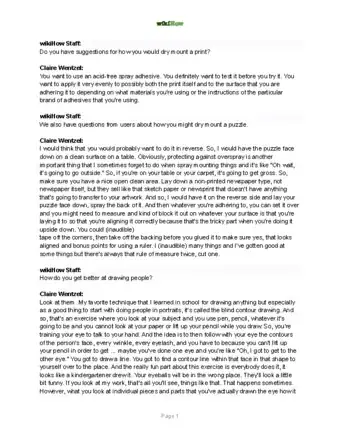
Thanks for reading our article! If you'd like to learn more about becoming an artist, check out our in-depth interview with Claire Wentzel.
References
- ↑ https://www.youtube.com/watch?v=LmPgZWgGFC0
- ↑ https://www.curtisward.com/choosing-and-using-sketching-pencils
- ↑ https://conceptartempire.com/build-a-sketching-habit/
- ↑ https://daisyyellowart.com/vividlife/15-tips-to-improve-your-drawing-skills
- ↑ https://www.artistsnetwork.com/art-mediums/drawing/learn-to-draw-perspective/
- ↑ https://www.artinstructionblog.com/20-ways-can-become-better-artist-starting-right-now
- ↑ https://keenewilson.com/page/6899/design-and-composition-practical-advice-for-the-advanced-artist
- ↑ https://blog.penelopetrunk.com/2009/02/06/how-to-build-a-career-as-an-artist/
- ↑ https://magazine.artstation.com/2015/02/10-tips-surviving-year-freelance-artist/
